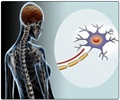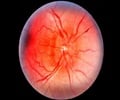According to research, people with multiple sclerosis (MS) who were treated with combination therapy did not see significant clinical benefit over those treated with single drug therapy.

"This is the first NIH-sponsored, multi-center, comparative trial evaluating the benefits of both combination therapy and monotherapy in MS," said lead author Fred Lublin, MD, Director of the Corinne Goldsmith Dickinson Center for Multiple Sclerosis at The Mount Sinai Medical Center. "The study is the first to show that a combination trial is feasible in MS, to compare a combination to established monotherapy, and to provide comparative efficacy data for two commonly-prescribed drugs."
The research team enrolled 1,008 participants from 68 sites to receive IFN plus GA (499), IFN alone (250), or GA alone (259), with 30µg IFN administered intramuscularly weekly and/or 20 mg of GA injected daily. The groups were followed for three years to assess if the combination therapy reduced MS relapse rates.
While combining IFN and GA was safe and effective, patients taking this regimen did not see clinical benefit greater than those taking a single agent. There was no substantial improvement in neurological function in participants in the combination therapy group. They also found that GA alone was superior to IFN alone in reducing relapse rates. MRI findings also suggested that the IFN plus GA together were better in reducing new lesions and total lesion accumulation than either drug alone.
"While there was no substantial clinical benefit of combination therapy over monotherapy, we will continue to monitor these patients to see if the reduction in MRI lesion translates into a future clinical benefit," said Dr. Lublin. "The CombiRx study also provides a large dataset to analyze different aspects of the disease, such as potential biomarkers for prognosis and response to therapy."
The National Institute of Neurological Disorders and Stroke (NINDS) provided funding for the CombiRx clinical trial (grant #UO1NS045719 and R21NS41986), which will continue to evaluate the cohort for four more years.
The NINDS describes MS as a neuroinflammatory disease, which affects the central nervous system by attacking myelin, a substance found in nerve fibers, and causing lesions. NINDS estimates that up to 350,000 individuals in the U.S. have MS, which affects twice as many women as men, with most symptoms appearing between the ages of 20 and 40. Experts believe this complex autoimmune disease may be caused by genetic and environmental factors.
 MEDINDIA
MEDINDIA




 Email
Email






